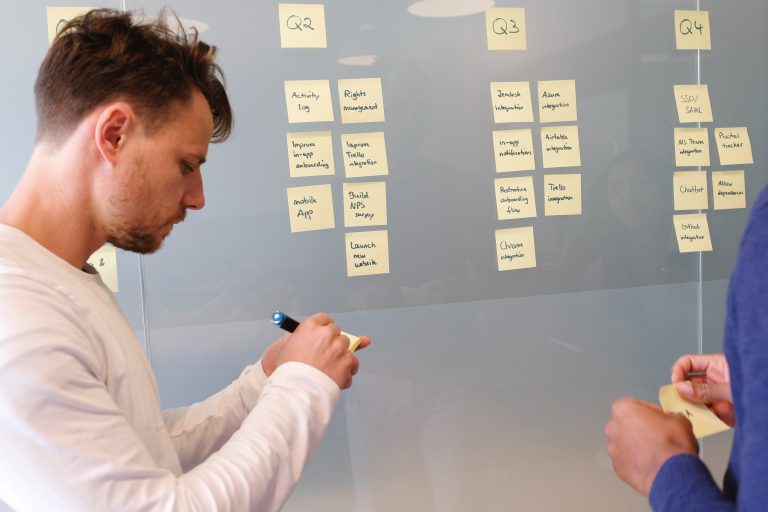Given the number of inputs that we receive every day, both in our work and personal lives, it can be difficult to stay on top of everything. Over the years, I have developed a simple strategy that helps me to stay focused, never miss anything, and, ultimately, get things done.
In short, my strategy is to either do a given task immediately or plan it for later.
I refer to this idea as the do or plan strategy, or DOP for short. This strategy, in its simplest terms, revolves around a fundamental question when deciding what to do about an incoming assignment.
What is the DOP method?
“Can I complete this task immediately (do), or should I postpone it to a later time (plan)?”
When I have an incoming task, such as a new email, the goal is to never lose focus on whatever I am doing and yet be able to keep tabs on everything that’s going on while I’m busy. The DOP strategy’s aim is to make sure that I can concentrate on what I am doing and, at the same time, keep my incoming tasks under control. In the Get Things Done methodology, this strategy falls in the Organize step, “putting it where it belongs”.
At any given time, I usually have something to do. It can be work, sports, drinks with friends, or a hobby. Sometimes I create assignments for myself (e.g., I have a new idea to develop), other times, tasks arrive from outside, for example, from an email, a Slack message, Asana, etc.
These tasks usually have variable duration and difficulty. Some are quick and simple; others are long and complex; some have fixed deadlines, and others don’t. The DOP strategy is based on the idea that the decision on whether to do something immediately or not depends on the time the task will take to be completed. In other words, when deciding whether to do the task now or plan it for later, the choice depends on how long it will take to complete the task.
It’s all about the timing.
In the DOP strategy, the concept of “immediately” has a literal meaning. Executing a task immediately means completing it the moment the task arrives. For example, if I receive an email, tackling it immediately means reading it and executing the needed action — such as replying or deleting it — immediately, without any interruption.
If, on the other hand, I do not want or cannot execute it immediately, the DOP strategy requires planning. What does it mean to plan? It means first creating a task and then assigning it to a time slot. Since deciding when to do a task is, in itself, a task, this sub-task (deciding when) is also a task that must conform to the DOP strategy. Either I plan it immediately, or I need a system that allows me to decide later when to plan.
Manually inserting tasks and then remembering to plan them can be quite a chore, and, more importantly, constantly switching contexts to write down new tasks is inefficient and time-consuming. When I am dealing with a task, I don’t want to be interrupted, especially to manage my other tasks. Adding tasks to my backlog and then planning my tasks are activities that require both time and effort. For this reason, to efficiently apply the DOP strategy, I need a tool of some kind that allows me to quickly decide what to do when a new task arrives and then go back to what I was doing.
Under this perspective, the concept of immediately is influenced by the system I have in place to manage tasks.
How does it work?
In the DOP strategy, an action can be performed immediately if it can be done in less time than it takes to add the task to the backlog for later planning. For example, if while I am reading an article I receive an email, I can reply to it immediately if it takes less time to reply than it takes to add it to my backlog system. If, on the other hand, it takes more time to reply than it takes to add it to the backlog, then I need to create a new task (“reply to email”). I can either immediately plan this new task (e.g., later today), or I must add it to the backlog of tasks that have to be planned. Remember, in the DOP strategy planning a task is a task in itself.
Let’s make a more detailed example. Let’s say that I’m working on an important document, and I receive an invitation to lunch. Specifically, I receive an email from a colleague asking me to have lunch together tomorrow. When I read the email, if I have access to my calendars in a simple and immediate way, I can instantly respond according to my availability, possibly proposing a different schedule. The time this process takes me if I have all the information readily available can be only a few seconds (with the right tools). Especially if I can use an automated reply, for example, those that are suggested by Gmail. In this case, I can send my response immediately, and I don’t need to add a task to remind me to do so. On the contrary, if I can’t make a decision immediately, for example, because I need to check with someone else my plans for tomorrow, then I need to add a task to my backlog. In this case, the time it takes me to add the task to the backlog is less than the time it takes me to reply to the email.
By following this strategy, the flow of work is never interrupted, and I can always focus on what I am doing. As soon as I complete a task, I can immediately move on to the next one, which includes planning the tasks in the backlog, if there are no other tasks with higher priority planned first.
This process can be described with a flow chart:
Finding the right system
For the DOP strategy to be both effective and time-wise efficient, I need a tool that allows me to quickly act as needed, ideally, automate what can be automated and then go back to what I was doing.
Such a system should first have an intuitive way of knowing my schedule and what I need to do next. Then it should allow me to quickly add tasks to the backlog and have an easy way to identify tasks that need to be planned. The system should also allow me to easily plan a task and quickly tackle the planning of tasks in the backlog.
The ideal tool for me to apply the DOP strategy is Akiflow. After many years in which I have tried countless tools, including some created by myself, the best to date is hands down Akiflow, which aligns perfectly with the DOP strategy.
First, Akiflow integrates with all my calendars, so I always have a clear view of my schedule. Thanks to its Command Bar, I can very quickly add tasks from anywhere, so while I’m working on any given task, and a new task needs to be added to the backlog, I can do it in a few seconds. Then, thanks to its Inbox section, I can easily identify tasks that need to be planned.
Best of all, for incoming tasks arriving from outside, such as Gmail, the creation of new tasks can be heavily automated. For example, I can create tasks from emails with a single click. In this way, whenever I receive an email to which I can’t reply immediately, I simply add it to Akiflow, and I can then execute what’s needed later. The same goes for Slack messages, websites I visit, and many more other tools I use daily.
Bottom line
In conclusion, in my experience, the best way to be productive is to find the right methodology to stay on top of everything and then find the right tool to apply it. For me, the DOP strategy is the most effective, and Akiflow is the tool that best matches my requirements.

How Strategic Planning can Affect your Productivity
Like all the other good things in the world, productivity cannot be achieved simply either. Without strategic planning, it is highly unlikely that you will employ the utmost productivity you can have at work. What is good to notice here is that you can easily level up your productivity if you know what a crucial […]

Best Task Management App For 2023
Have you or your team been struggling to effectively plan and deliver tasks on time? If you’re often missing key deadlines or falling short of effective collaboration, you could benefit from task management software. Task management apps allow you to track time, manage a plethora of tasks, and collaborate efficiently with a wider team. The […]

Craft An External Brain To Become More Productive
Have you ever thought about using an external brain system to streamline your productivity? Curious about what an external brain even is? If you’re constantly searching for a way to become more organized and productive, this technique could help you. What’s an External Brain? Before we explore the meaning of the external brain, let’s understand […]

